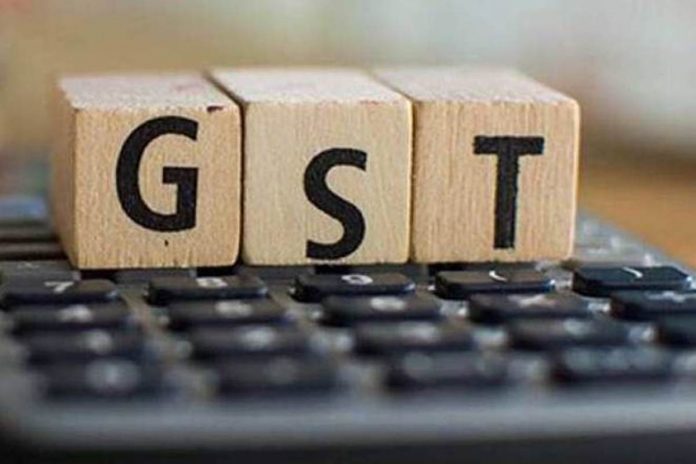This summary is written by Aditya Singh, from Symbiosis Law School, Noida.
The guest for the webinar was Lalitendra Gulani, he graduated from the Ram Manohar Lohiya National Law University, Lucknow in the year 2015. After which he joined Nitya tax Associates where he was part of the litigation team and majorly specializes in indirect taxations. Now after 4 years of having been in Nitya he has started his own independent practice. The name of his firm is Palit & Co. Advocates and Solicitors with 4 more team leaders. With respect to his profile, he holds an extensive experience in the field of indirect taxation, covering Goods and Services Tax, Anti-Profiteering, Customs, Excise service tax, Central Sales Tax, Value Added Tax, etc. in fact he is regularly engaged by the Fortune 500 Companies for litigation support and advisory support. He has furthermore worked extensively in the Automobile, FMCG, and FMEG sectors. He happens to be an excellent writer and has articles published regularly on Tax Sutra, Tax India, and Online on Wolters Kluwer.
The host for the webinar was Shweta Rath, who is a Senior Associate at LawSikho. She introduced the topic of the webinar which was on GST, with the backdrop of what is going on right now and what will be the implications and challenges of GST during and after COVID-19. Right now the country is dealing with a very big crisis and alongside the casualties that happened the biggest worries also remain the amount of revenue loss that has happened to our country right now we are looking at a loss of around 217 billion dollars and figures are just rising and if talked about only the indirect taxes the immediate impact that we have seen right now is that in March the collections have been reduced to 97,597 crores in comparison to the collection which happened in February that was of 1.5 lakh crores.
The webinar deals with the announcements that the government has made and Mr. Lalitendra will explain what are these announcements with respect to GST, what are the changes with respect to the substantive and procedural laws to deal with the current crisis and most important are the implications that are going to take place.
Q1. A short introduction about GST
A1. To understand any tax law, one needs to answer only three questions:
- what is being taxed;
- who is required to pay the tax; and
- how much tax has to be paid.
if these three questions are answered 60-70% of the portion of the law is covered. So, GST is a tax on the supply of goods and services by a supplier to a recipient for a consideration. the term supply covers many types of transactions such as sale transfer lease license or disposal, for example, A supplied a good of value Rs. 100 to B that good carries the tax rate of 18% and B takes some branding activities, he polishes them, processes them, and subsequently supplies it to C for the value of Rs. 200 and which again carries a tax rate of 18% so when the supply takes place from A to B, he will be required to pay the tax according to the 18% rate will be Rs.18. So, A will raise the invoice of Rs. 118 to B who will then remit Rs. 118 to A and he will remit the 18 rupees to the government. Now when B will supply goods to C for Rs. 200 which again carries the tax rate of 18% the price becomes Rs. 236 So B will raise the invoice of Rs. 236 to C, B while remitting the taxes to the government he will pay only 18 rupees, as 18 rupees paid to A will be available to B as ITC and while filing the tax returns B will state that his total tax liability is of Rs. 36 and 18 rupees are eligible as ITC and the excess of the tax liability is being paid through cash.
The government will require information from every taxpayer in 3 aspects, firstly, with respect to the value outward supplies that every taxpayer has made. Secondly, they will require data with respect to the value of inward supplies that a taxpayer has received for which the ITC has been availed and thirdly the tax liability that a taxpayer is required to deposit whether in the form of ITC or whether in form of cash. Details of outward supplies are furnished in GSTR-1 which is required to be filed on a monthly basis on the 10th day of the subsequent month and the way through which the tax is paid is by the way of return called GSTR-3B which is filed on 20th day of the subsequent month.

Q2. What has been the current impact, of the lockdown due to Covid-19, in the GST litigation space?
A2. Before looking at the GST aspect looking at the economical aspect is more feasible. The lockdown due to Covid-19 has brought all the economic cooperations to a halt, a month-long shut down for a 2.6 trillion dollar economy implies a loss of 217 billion dollars which roughly translates to about 1.4 lakh crores and if the stimulus is seen which is the central government has released which is to the tune of 1.7 lakh crores which clearly shows that Covid-19 disease has put a serious dent in the economy already it was only inevitable that the government would announce measures to defer the compliances under the GST law and other laws, many measures also include some concessions in other areas of the law example Insolvency and Bankruptcy Code. If we go chronologically, on March 19 Prime Minister came before the public and announced the Janta curfew on March 20th, 2020, returns GSTR-3B was required to be filed and subsequently on March 24th, 2020 the Prime Minister again announced the lockdown for 21 days accordingly it was imperative that returns were deferred. On March 24 our Finance Minister in reference to this lockdown due to the outbreak of COVID-19 they declared certain concessions in a press release. On March 24th the government made some announcements with respect to the indirect taxes, then on 31st March the President came out with the ordinance that was related to taxation and other laws, then finally on 3rd April, the Central Government issued various notifications to bring into effect some proposed concessions.
Q3. What are the changes in the procedural laws that have come about?
A3. The government has issued 7 notifications, starting from notification number 30 to notification number 36. Now for the purposes of GSTR-3B which is the method through which we remit our tax liabilities, in respect of the concessions with respect to GSTR-3B the government divided the taxpayer into three brackets, but has not changed the due dates and has granted concession with respect to the imposition of interest. The first bracket includes taxpayers having an aggregate turnover of more than Rs. 5 Crores in the previous financial year. In the second taxpayers having an aggregate turnover of more than Rs. 1.5 Crores but less than or equal to Rs.5 crores in the previous financial year. Lastly, in the third bracket taxpayers having aggregate turnover up to Rs. 1.5 Crores in the previous financial year are included. Taxpayers falling in the third bracket have given much more concession in comparison to the taxpayers falling in the other two brackets. Basically, this is the deferment of Returns and the due dates prescribed are higher in case the turnover limit is lesser. So, an assessee having a turnover of up to 1.5 crores would have much higher benefit. These are but with respect to the changes that are on the grounds of interest and late fee for filing the returns.
Notification number 35 was also issued by the government, in terms of this particular notification all the returns under GST regime, for instance, GSTR-6 which has to be filed by the Input Service Distributor, GSTR-7 which is required to be filed by the Taxpayer Deducting Tax at Source, GSTR-5 applicable on Non-Resident Taxable Person, they have also been deferred. In earlier scenarios for GSTR-1 and GSTR-3B the due date was not extended only the concession was granted, however in case of all the other returns the government says that where was the due date with respect to any returns false between March 20 2020 June 25 2020 the government has extended its due date to June 30, 2020. Apart from this another important issue was regarding the validity period of the e-way bills, the government has extended the validity period of each e-way bill which expires between March 2020 to April 15 2020 it has been extended till April 30 2020.
Q4. What are the changes in the substantive laws that have come about?
A4. The first change is the insertion of force majeure clause, Clause 8 of the Taxation and Other Laws Ordinance 2020 that has been issued by the president exercise of article 123 provides for the insertion of Section 168A in the CGST Act. Force majeure under clause 8 has been explained as a case of War, epidemic, flood, drought, fire, cyclone, earthquake, or any other calamity caused by nature or otherwise affecting the implementation of the provisions of the act.
The second change was that the government issued notification number 35, in which there is a time limit which has been prescribed in the statute in the CGST Act which prescribes that the appeal has to be filed before the appellate authority within 3 months and there is a condonable period of 1 month. now the government stated that in terms of this notification whenever the time limit for filing replies, appeals Falls within the period of March 20 2020 to June 29 2020 it has been extended to June 30 2020 and similar concessions have been granted in the ordinance with respect to excise laws and service tax laws also.
The third change was added in respect to the restrictions in availing of input tax credit which were added by rule 36(4) of the central goods and services Tax rules 2017 which restricts input tax credit attributable to inward supplies the details of which do not feature in form GSTR-2A to the extent of 10%. Applicability of aforementioned restrictions in respect of ITC attributable to the month of February 2020 to August 2020 will have to be cumulatively observed while filing return for September 2020.
The fourth change was with the respect that any taxpayer who is making Exports is required to realize the proceeds of Exports in order to avail the export benefits under the GST law and the RBI prescribes a time limit for realizing that export proceeds. Now the RBI has extended the period for realization of the export proceeds, in respect of Exports made up to July 31 2020, from 9 months to 15 months. The negative consequence that can arise is that one would not be entitled to export incentives that basically pertains to the taxability of the transaction and admissibility of refund of the ITC.
Q5. What are the disputes that may arise or the loopholes that might cause a problem in the future due to these changes?
A5. all these amendments that are being made are not free from faults. so there is a possibility of a litigation that may arise in the future, if the Supreme Court’s order dated March 23 2020 is considered, this order was passed in exercise of the powers conferred under Article 141 as per which the law declared by the supreme court is the law of the land. The Court basically took suo moto cognizance of the situation arising out of the challenges faced by the country on account of the outbreak. by the virtue of its powers the court had ordered that a limitation period in all such proceedings irrespective of the limitation prescribed under general law or special law weather condonable or not shall stand extended with effect from 15th March 2020. the ordinance on the other hand, stated that any time limit for completion or compliance of any action by any authority inclusive of filing of appeals if it falls during the period from 20th March 2020 to 29th June 2020.
So, whenever an assessee is filing an appeal before the appellate authority and in case is time period was to expire on or post 15th of March. The appellate authority would probably tell the assessee that there was no condonation prescribed under the ordinance or under the notification and if it has not been made in such period it shall get extended to 30th June 2020. Therefore, there is a conflict between the supreme court order and the ordinance passed. Therefore, an appeal to the appellate authority lies against the original order within 3 months from the date of communication of the order, furthermore, one month is also granted which is condonable by the appellate authority thereafter it is not condonable by the appellate authority and had been held in a number of judgments. But the issue which will arise would be whether taxpayer filing the appeal will be required to prefer an application for condonation of delay if such a case arises.
Apart from these there are certain other issues that may arise for instance the ordinance allows the central government to pass notifications with retrospective benefit from the date of the commencement of the act and not beyond it. Therefore, we can see that there are inconsistencies between the ordinances and these notifications. There are all these amendments being made in the CGST Act now identical GST law has been framed by the state legislature also. If it is observed these ordinances are making changes in the Central law however there are no corresponding changes being made in the state law so currently there is a conflict exist between the state GST law and the central GST law.
Q6. The ordinance does not have anything related to the VAT tax of the states, whether the states have to separately issue notification under the relevant VAT tax?
A6. The ordinance which has been issued by the president would not have covered anything with respect to the state laws the relevant power lies with the Governor and it is imperative that the state governors also do the same and issue separate ordinances which are roughly identical to the Central ordinance and after incorporating the necessary changes with the VAT tax of goods and subsequently the state government can issue notifications.
LawSikho has created a telegram group for exchanging legal knowledge, referrals and various opportunities. You can click on this link and join:
 Serato DJ Crack 2025Serato DJ PRO Crack
Serato DJ Crack 2025Serato DJ PRO Crack










 Allow notifications
Allow notifications



